In Mexico’s Guerrero state, slaughter of band members reflects legacy of violence
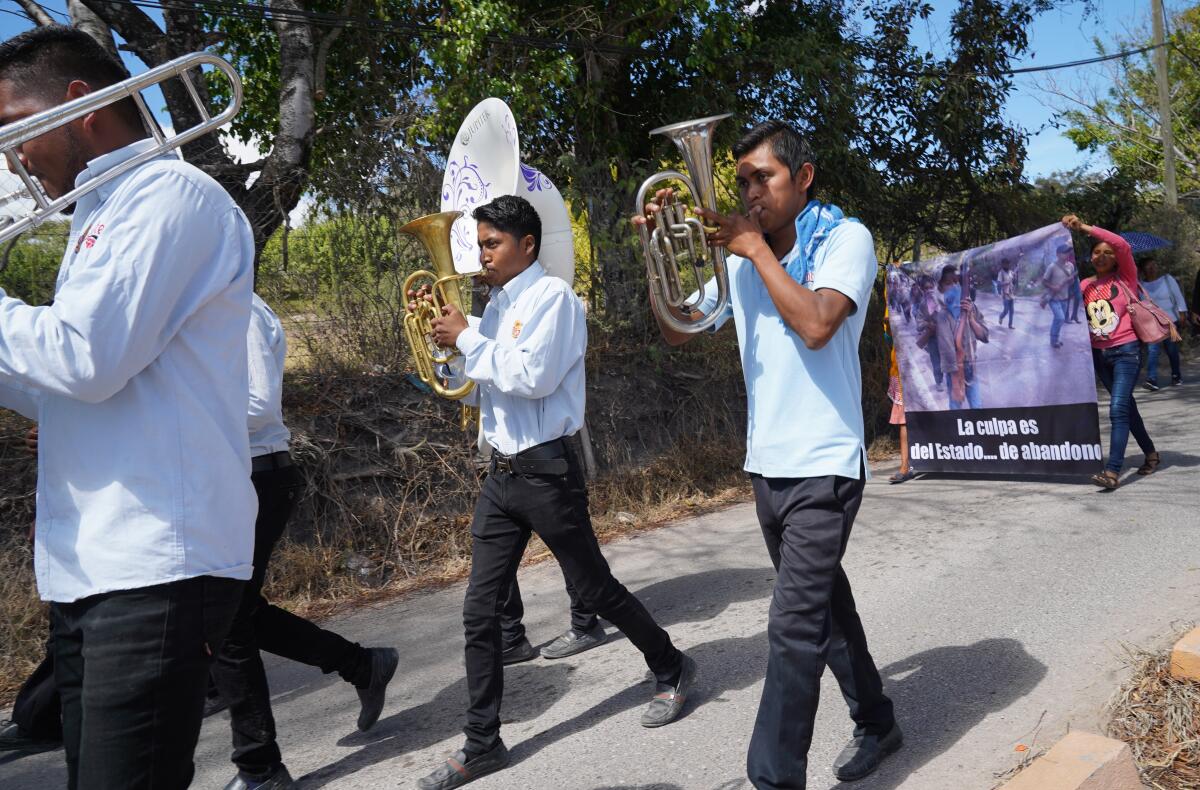
- Share via
ALCOZACAN, Mexico — At 15, Israel Mendoza Pasado was the junior member of Sensacion Musical, the band founded by his father and managed by his mother.
The violence that pervades this stretch of Guerrero state in southwestern Mexico didn’t stop the group from traveling for gigs and playing its repertoire of cumbia, traditional ballads and romantic favorites.
“We’ve never had any problems with anyone,” said Israel’s mother, Maria de Jesús Pasado Margarito, 37. “We never thought about danger.”
She stayed home here in the village of Alcozacan during the band’s last trip — to a religious festival a few hours away.
Her son and the rest of the group never made it back. They were returning on the morning of Jan. 17 when members of a regional gang called Los Ardillos — the Squirrels — stopped their two trucks on a remote road, forced everybody out and attacked them with knives, according to state prosecutors.
All 10 musicians and crew members were killed and at least one truck was set ablaze, burning some of the bodies beyond recognition.
The sprawling municipality of Chilapa de Alvarez is one of the most lawless areas of Mexico. Government authority has all but disappeared, leaving criminal cartels and self-proclaimed “community police” groups to compete for control.
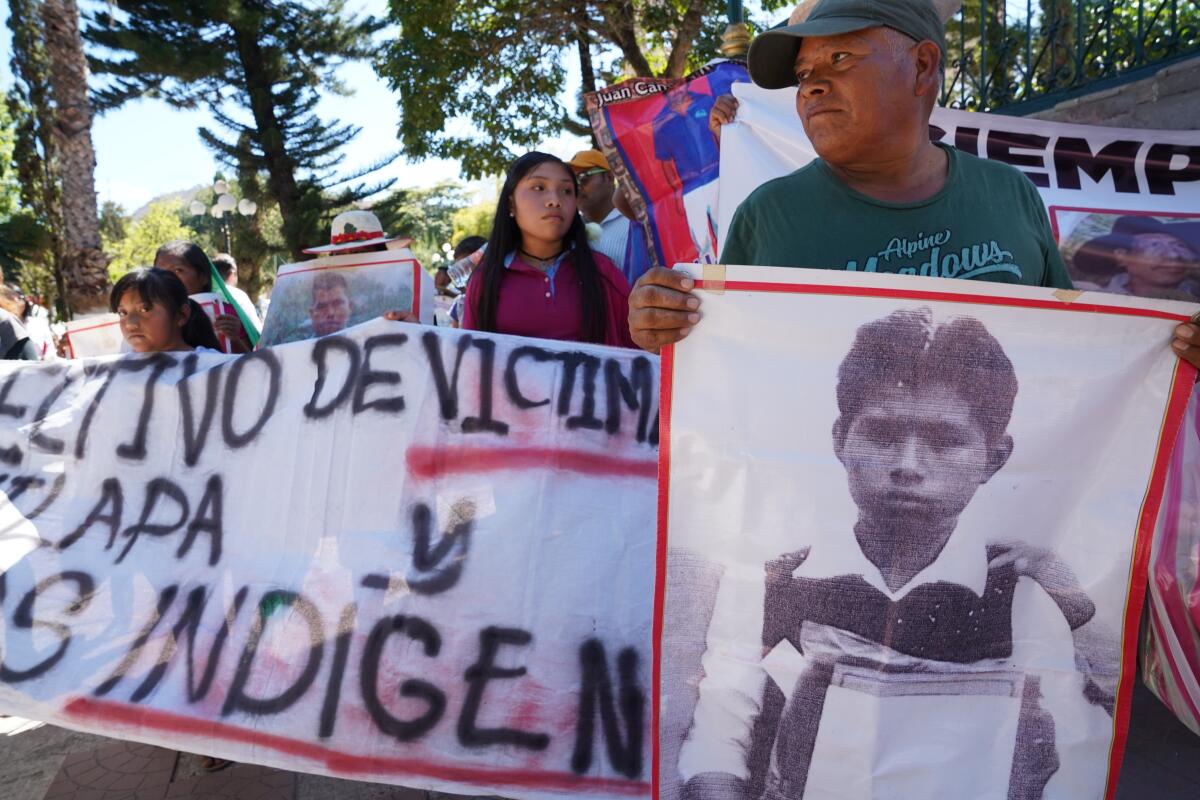
The agricultural hub of 129,000 people encompasses both a lively urban center — a renowned weekend market hosts artisans, farmers and others from throughout the region — and scores of far-flung mountain settlements, including the village of Alcozacan. Most every rural outpost is someone’s turf, and residents know the boundaries.
Violence has forced thousands from their homes in the Chilapa area and created so-called ghost villages that many have fled out of fear, leaving houses abandoned.
“When they ‘disappeared’ my husband, I had to get away for the safety of my kids,” Carmela Vásquez Esteban explained.
She and her four children fled their home in the village of Ahuihuiyuco, after her husband went out to buy gifts for Mother’s Day almost five years ago and was never seen again.
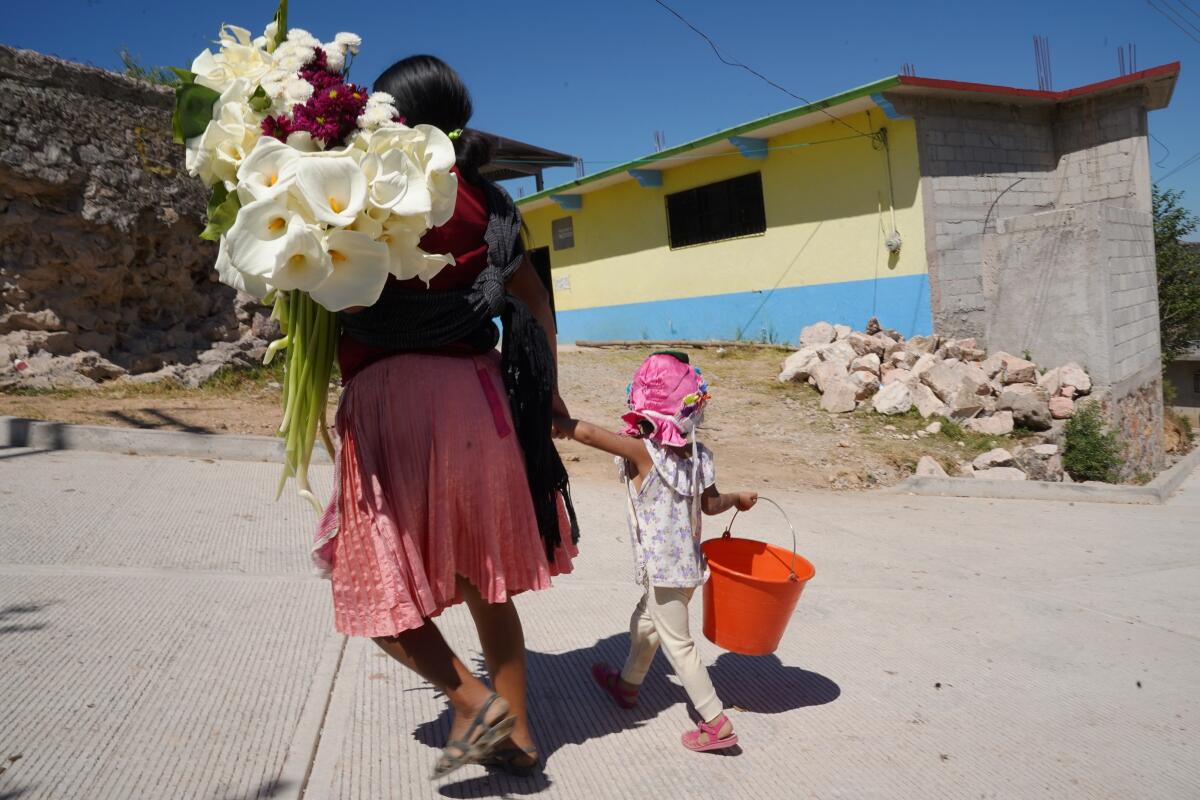
The roadside slaughter of the band last month might have been just another grisly episode if the victims hadn’t included at least two members of a vigilante group — which responded by announcing that it had started training children to join the battle against Los Ardillos and invited the news media to a conscription ceremony.
Images of more than a dozen children, including at least one who was 6, wielding rifles made international news and drew widespread condemnation.
“They should be ashamed,” President Andrés Manuel López Obrador said of the community leaders. “Showing off children with arms and taking videos is an arrogant act.”
There were no apologies from the vigilante group, which claims 300 members and calls itself the Regional Coordinator of Community Authorities of the Founding Villages.
Founded in 2014, the militia is part of a proliferation of such groups in Guerrero. The Mexican Constitution allows indigenous communities — such as the Nahuas, who reside in this part of Guerrero — a measure of limited self-government, including formation of their own police units.
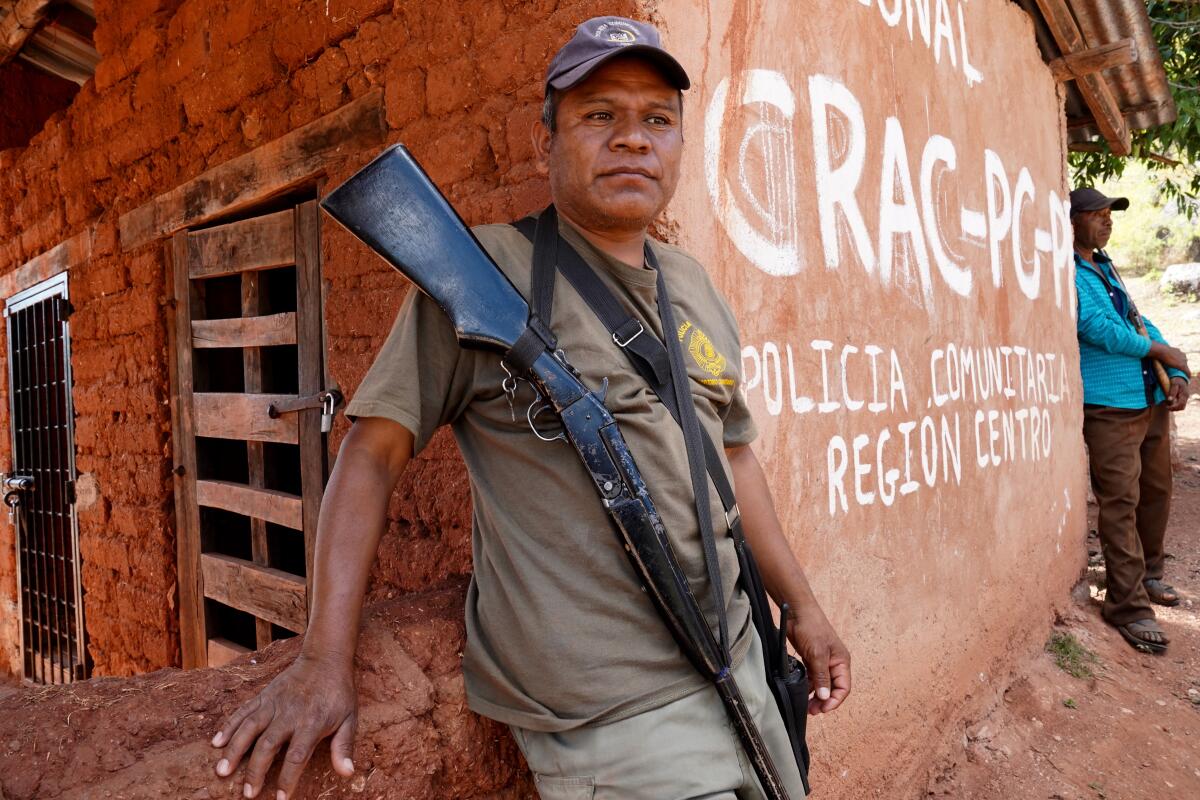
“We are preparing the children because we don’t know if today or tomorrow they are going to come to kill us,” said Bernardino Sánchez Luna, the charismatic vigilante group founder. “How are kids and children going to defend themselves if they are not prepared?”
But he and other leaders also acknowledged that trotting out the child combatants in front of the media was a public relations ploy. The goal: to pressure the government to intervene on their behalf in their bloody feud with Los Ardillos.
“They ask, ‘Why are we training children?’ So that they pay attention to us,” explained Sánchez, wearing sandals as he stood guard with a shotgun at the entrance to Rincon de Chautla, population 115.
Situated at the end of a winding mountain road flanked by fields of grazing cows and goats, it is one of 16 villages — with a total population of 6,000 — patrolled by the militia. At the entrance to each is a guard post with sandbags.
“The fact is, our children have a right to defend their families,” said Sánchez, 48, who carries a walkie-talkie keeping him in touch with other units. “The government is doing nothing to keep us safe.”
In addition to the 10 band members and crew slain last month, Sánchez said, 16 other residents of the vigilantes’ territory have been killed and 14 more disappeared in the conflict with Los Ardillos since the beginning of 2018.
Community leaders have since closed off media access to the gun-toting children — 28 are being trained, officials said — as representatives negotiate with the state officials on a list of demands.
The demands include dismantling Los Ardillos, long linked to poppy and marijuana cultivation, heroin trafficking, extortion schemes and other rackets. But a major offensive against the gang — which is deeply entrenched in local politics and businesses — seems unlikely at a time when the Mexican president has adopted a generally nonconfrontational approach against organized crime.
The vigilante group’s portrayal of itself as an indigenous David with ancient hunting rifles fighting off a drug cartel Goliath brandishing automatic weapons has won the group a certain amount of sympathy.
But critics say the militia and other community police groups are themselves involved in criminal activity, including murders and drug trafficking.
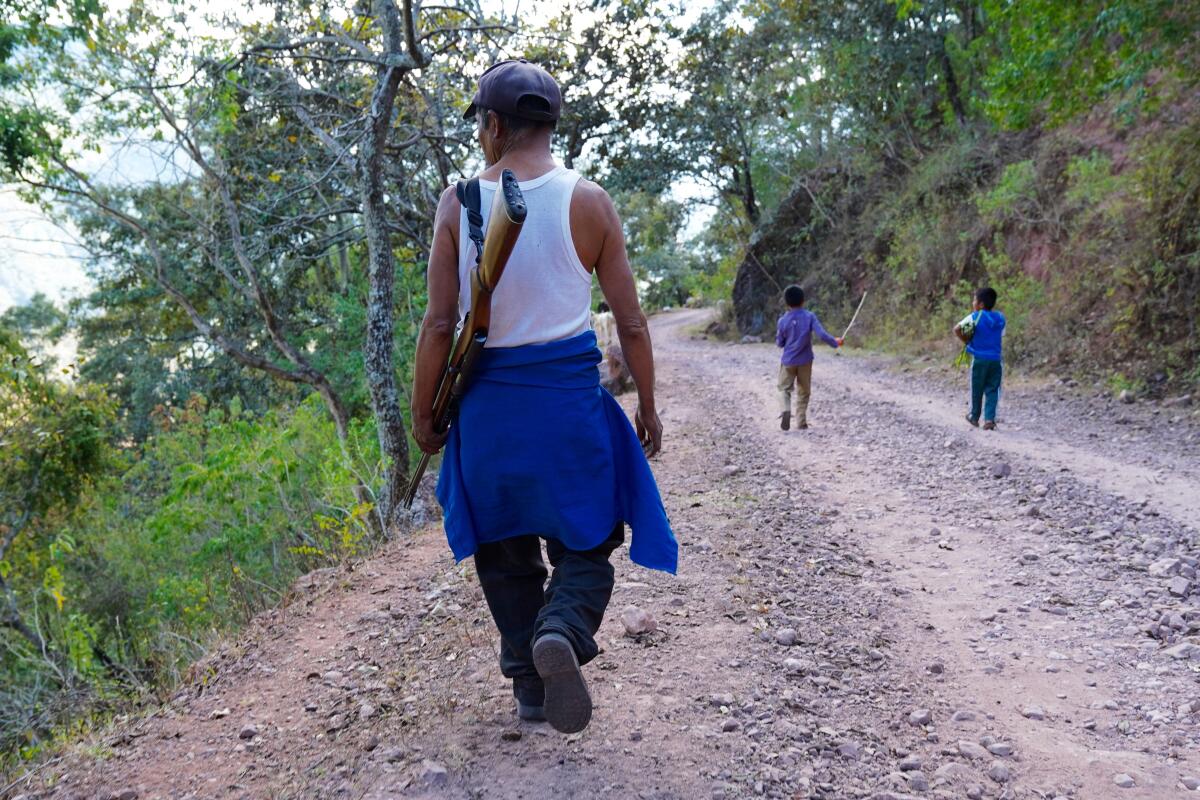
Village militias “are the armed foot soldiers of organized crime in Guerrero,” said José Díaz Navarro, who heads the Siempre Vivos — Always Alive — activist group, which demands an end to violence in the zone. “They are a big part of the problem of criminality.”
Sánchez, the vigilante leader, is himself a wanted man, for murder and abuse of power. He and at least two companions face arrest if they leave the confines of the 16 communities patrolled by his vigilantes.
The group wants the government to lift the arrest warrants, which stem from a gun battle in February 2015 that killed five residents of another Guerrero town, San Jeronimo Palantla.
Sánchez said he and the others responded in self-defense and are innocent. He denies that his vigilante outfit is involved in drug trafficking or other illegal activity.
Militia leaders, however, point fingers at other community police groups, including one known as Peace and Justice, which it accuses of being a surrogate for Los Ardillos and carrying out the recent ambush on the band.
The attack, Sánchez said, was probably score-settling for the killings of at least 14 Peace and Justice militants after they attacked Rincon de Chautla in early 2019.
The leader of Peace and Justice denies any link to Los Ardillos and labels his group a legitimate self-defense patrol that polices more than two dozen villages.
In Chilapa, as often as not, the vigilantes rule.
In a notorious incident in May 2015, about 300 attackers identifying themselves as participants in a self-defense militia entered Chilapa, occupied the police headquarters and took 11 officers hostage, alleging that the police worked for organized crime.
The assailants retained control of the town for five days, during which “dozens of people were disappeared and multiple attacks were committed against residents,” according to a report by Mexico’s National Human Rights Commission.
Violence in Chilapa peaked in 2017 — with 177 homicides — when several candidates running for office and political party officials were assassinated in what authorities said was a battle between Los Ardillos and a rival gang — Los Rojos, or the Reds — for control of local governments, their police forces and budgets.
Los Ardillos appears to have gained the upper hand, a fact that may have led to a decrease in violence. The homicide total last year dropped to 81.
“It’s true, homicides are down, but thousands are still living in fear, suffering from extortion and other crimes,” said Díaz Navarro, the peace activist and a former English teacher. “There is no accountability for killings, disappearances.”
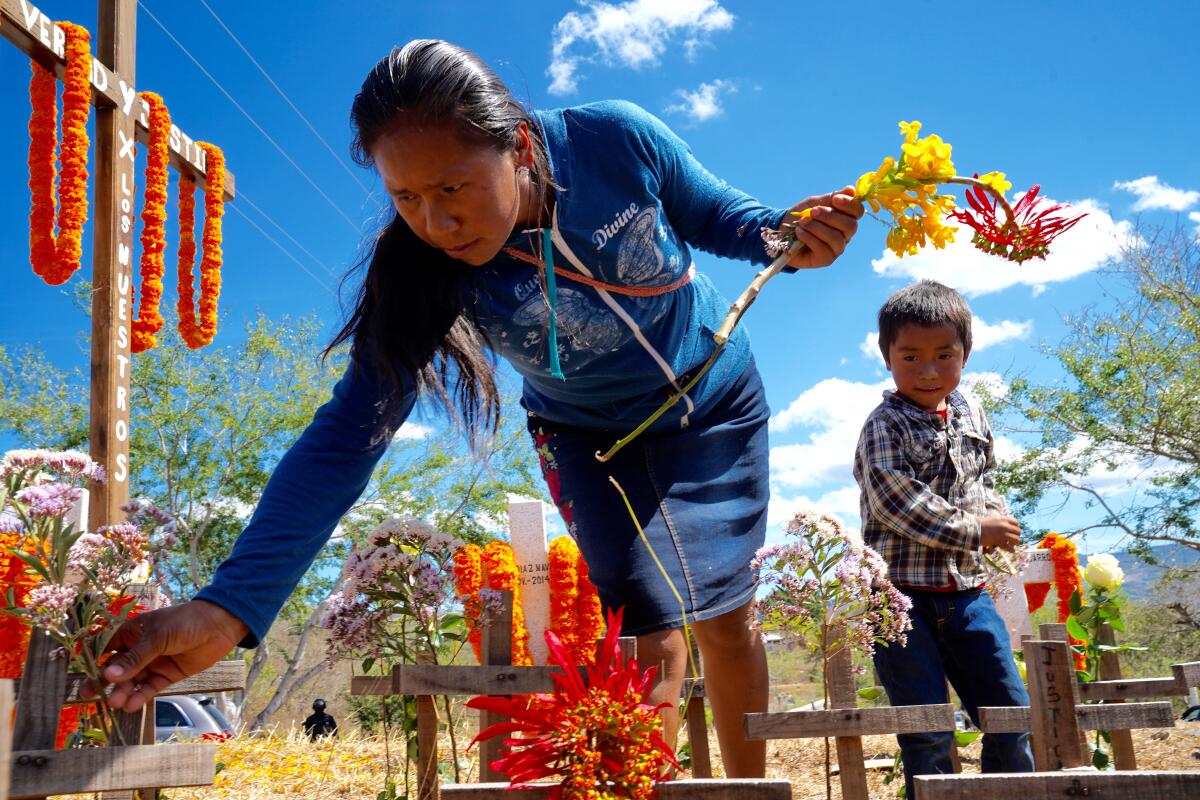
He blames Los Ardillos for the kidnapping and killings of two of his brothers in 2014 and said that during the last decade about 500 people from Chilapa disappeared.
On a recent Saturday, Díaz Navarro led a march through Chilapa to urge the Mexican government to declare the municipality the country’s first “humanitarian disaster zone.”
The demonstration began outside of town at a hillside memorial to the disappeared. Participants included three of the LeBaron brothers, dual U.S.-Mexican nationals who have become high-profile peace activists in Mexico since attackers — thought to be part of a drug cartel — shot and killed nine family members in November in the northern state of Sonora.
“I am living what you in Chilapa have been living with for a long time — that sense of impotence, of incapacity, of futility,” Adrián LeBaron, who lost his daughter and four grandchildren, told the marchers. “I doubt that anyone will ever go to prison for killing my daughter and the others.”
Among those demonstrating was Agustina Hilario, 60, who lost two sons — José Julio Fiscaleño, 35, and Cándido Fiscaleño Hilario, 20 — in the recent attack on the band. They were crew members, and each had a young daughter.
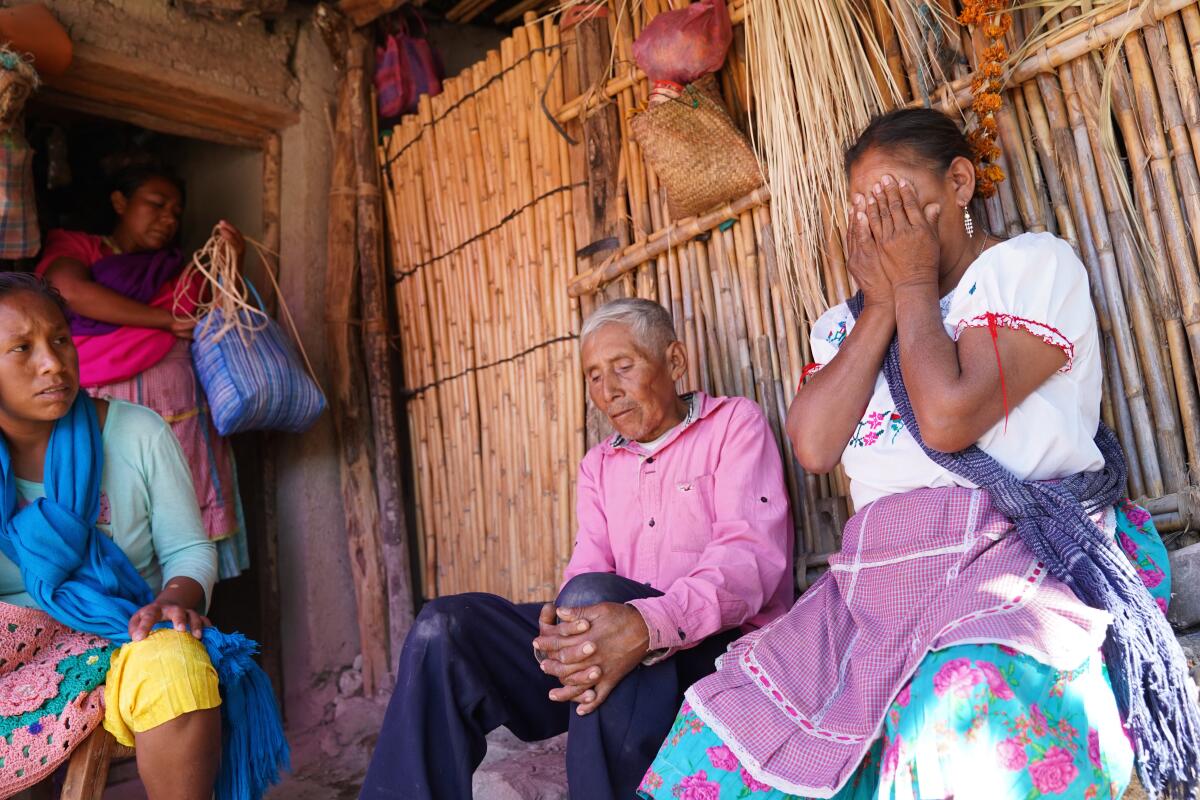
“They are both gone, and there was no one to help us plant the corn this year,” said Hilario, speaking Nahuatl through a translator as she fought back tears outside her adobe house. “It’s very difficult for me to recover from this loss. I have no appetite to eat since my sons were killed.”
Cándido, her youngest son, was friendly with Israel Mendoza Pasado, the band’s 15-year-old drummer and the youngest victim of the attack.
“Israel began to play the drums about two years ago and took a course to learn how to play better,” recalled Israel’s mother, Pasado Margarito. “He liked to play, to travel with the band.”
Israel was her only child.
She recalled her late son while speaking in an expansive storage room that used to be a rehearsal venue for Sensacion Musical, founded by her husband, who left for the United States more than a decade ago. The room is a place of deep silence now. Even most of the instruments are gone.
“Everything was burned in the attack,” Pasado Margarito said, adding that she was still making payments on one of the destroyed trucks that used to ferry the band.
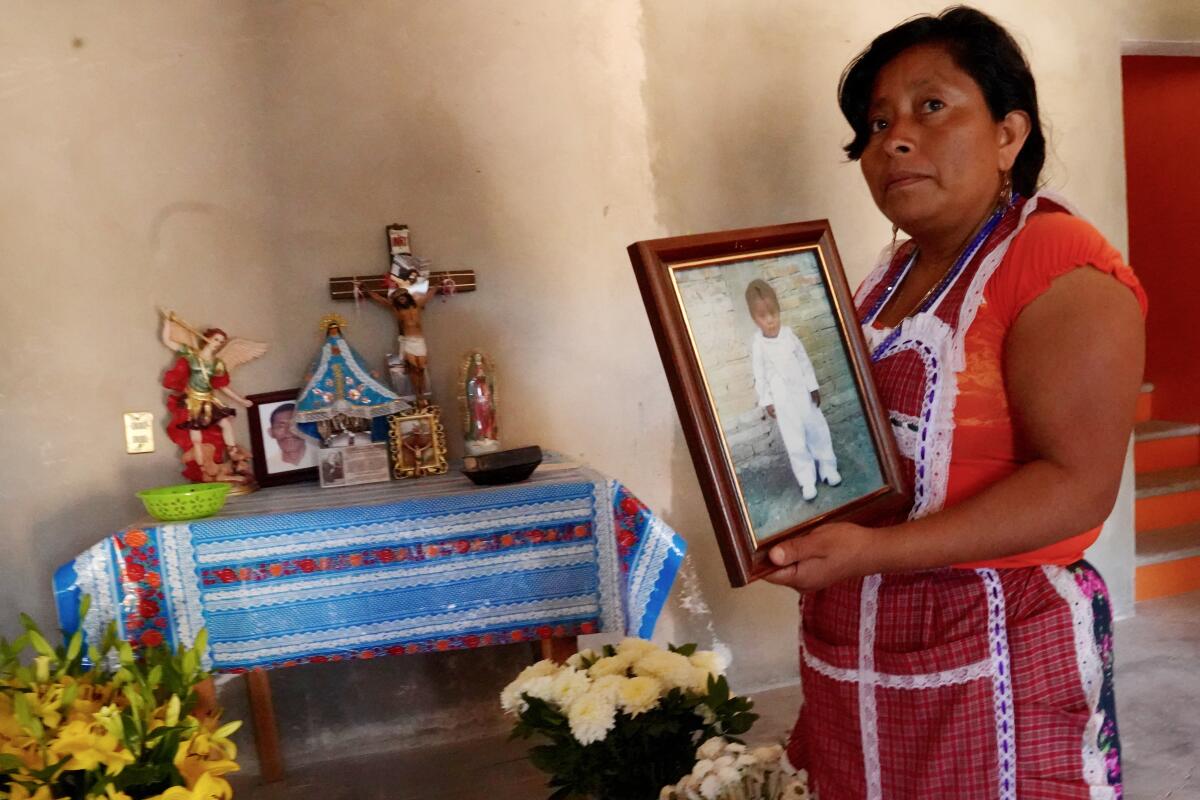
An altar with flowers and candles in a corner of the storage room honors her son. She grasped a framed photograph of him when he was just a year and a half old — a boy decked out in a white suit and white shoes staring at the camera. From the rafters hangs a tinsel ornament marking Israel’s graduation from primary school.
“I am not afraid of anything now,” his mother declared. “All I had in my life was my son. Now he’s gone. And I have nothing anymore.”
Special correspondents Cecilia Sánchez and Liliana Nieto del Rio contributed to this report.
More to Read
Sign up for Essential California
The most important California stories and recommendations in your inbox every morning.
You may occasionally receive promotional content from the Los Angeles Times.









